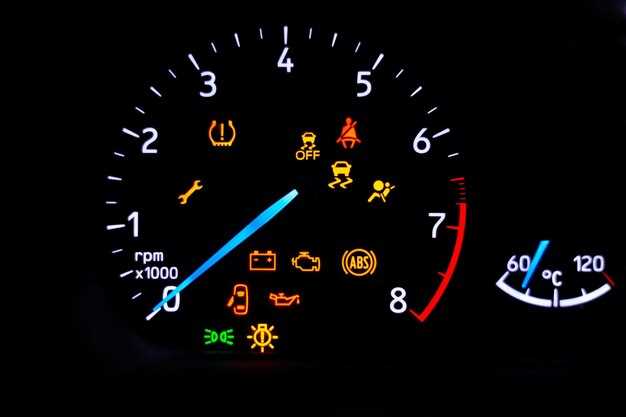
When driving your truck, the dashboard serves as a vital communication tool between you and your vehicle. The lights on your dash are designed to provide warning signals regarding various aspects of your truck’s performance and condition. Understanding what these lights mean is crucial for maintaining your vehicle and ensuring your safety on the road.
There are several reasons why the dashboard warning lights may remain illuminated even after you start your vehicle. These lights can indicate minor issues that need attention or serve as alerts for more serious problems that could affect the functionality and safety of your truck. Failure to address these warnings promptly may lead to more significant issues down the line, so it’s essential to be proactive and responsive to what your dashboard is telling you.
In this article, we will explore some common reasons for dashboard lights staying on, from simple issues like low fluid levels to more complex problems such as transmission failure. By understanding these potential causes, you can take appropriate action to keep your truck running smoothly and safely.
Understanding Common Dashboard Warning Lights and Their Meanings

Dashboard warning lights serve as critical indicators of your truck’s operational status. Each light signifies a specific issue that requires attention, encompassing everything from routine maintenance needs to potential engine failures. Understanding these warning signals is essential for effective diagnostics and ensuring vehicle safety.
One of the most recognizable warning lights is the check engine light. Illuminating this light can indicate various issues, from minor sensor malfunctions to significant engine problems. Ignoring this warning may lead to more severe damage and costly repairs.
The oil pressure warning light alerts the driver to inadequate oil levels or pressure within the engine. This warning must be addressed immediately, as low oil pressure can lead to engine seizure, resulting in catastrophic failure.
The battery warning light indicates potential electrical issues, such as a failing battery or alternator. Addressing this warning promptly is crucial, as continued operation without a functioning electrical system can leave you stranded.
Additionally, the brake warning light signals either an issue with the braking system or that the parking brake is engaged. A malfunctioning brake system poses a significant safety risk and necessitates immediate attention.
Other warning lights, such as the tire pressure monitoring system (TPMS) light, indicate low tire pressure or tire malfunctions. Maintaining proper tire pressure is essential for safe vehicle operation and optimizing fuel efficiency.
Becoming familiar with these common dashboard warning lights and their meanings not only aids in effective diagnostics but also enhances your ability to respond appropriately to potential issues before they escalate into significant problems.
Key Diagnostic Steps to Identify Underlying Issues

When your truck’s dashboard lights remain illuminated, it often indicates potential issues that require immediate attention. The first crucial step in diagnosing these problems is to retrieve any diagnostic trouble codes (DTCs) using an OBD-II scanner. This tool connects to your truck’s onboard computer and provides specific codes that pinpoint the area of concern, allowing for a more targeted approach.
Next, inspect the dashboard warning lights closely. Different colors and symbols signify various problems; for example, a red light typically denotes a critical issue, while yellow or orange lights may suggest less urgent concerns. Familiarizing yourself with your truck’s user manual can enhance your understanding of these warnings and help prioritize which issues need urgent action.
Following the code retrieval, conduct a visual inspection under the hood and around the truck. Look for loose connections, damaged cables, or signs of fluid leaks that could contribute to the warning lights. A thorough check can often reveal simple problems that may not require extensive troubleshooting.
Another important diagnostic step is to assess the battery and charging system. A weak battery or failing alternator can cause various warning lights to illuminate. Test the battery voltage and inspect the charging performance to ensure they are operating within normal parameters.
Finally, it is essential to verify sensor functionality, as faulty sensors can lead to erroneous warnings on the dashboard. Employing a multimeter or specific diagnostic tools can help you check the performance of critical components such as the oxygen sensor, mass airflow sensor, and temperature sensors.
By following these key diagnostic steps, you can more effectively identify the underlying issues that are causing your truck’s dashboard lights to stay on, ensuring a safer and more reliable driving experience.
How to Address and Resolve Dashboard Warning Signals
When your truck’s dashboard lights illuminate, it is crucial to respond promptly to avoid further issues. These warning signals serve as diagnostics tools indicating potential problems within the vehicle’s systems. Understanding how to address these alerts can save you time, money, and ensure your safety on the road.
1. Identify the Warning Light: The first step is to identify which dashboard light is illuminated. Common warnings include the check engine light, battery warning, oil pressure light, and tire pressure monitoring system (TPMS) light. Refer to your owner’s manual for specific meanings associated with each dash indicator.
2. Conduct Basic Checks: After identifying the warning light, perform basic checks. For example, if the tire pressure light is on, verify the tire pressure using a gauge. If the check engine light is illuminated, inspect the gas cap; a loose cap can trigger this warning.
3. Use OBD-II Scanner: For more complex diagnostics, consider using an OBD-II scanner. This device connects to your truck’s onboard diagnostics port and retrieves error codes that provide deeper insights into the issue. Once you have the codes, research their meanings or consult a professional for further assistance.
4. Resolve the Issue: Depending on the diagnostics obtained, take necessary actions. If it’s a minor issue, such as a loose battery cable, tighten it and see if the light resets. However, for more serious alerts like those indicating low oil pressure or engine overheating, it’s crucial to seek professional help immediately to avoid severe damage.
5. Reset the Dashboard Lights: After addressing the underlying problem, some dashboard lights may require a manual reset. This can often be done by disconnecting the battery for a few minutes or through the OBD-II scanner, depending on the model of your truck.
6. Regular Maintenance: To minimize the chances of dashboard warning lights activating in the future, adhere to a regular maintenance schedule. Routine checks of fluids, brakes, tires, and engine components can prevent many issues from developing.
By following these steps, you can effectively address and resolve dashboard warning signals, ensuring your truck remains in optimal condition.




